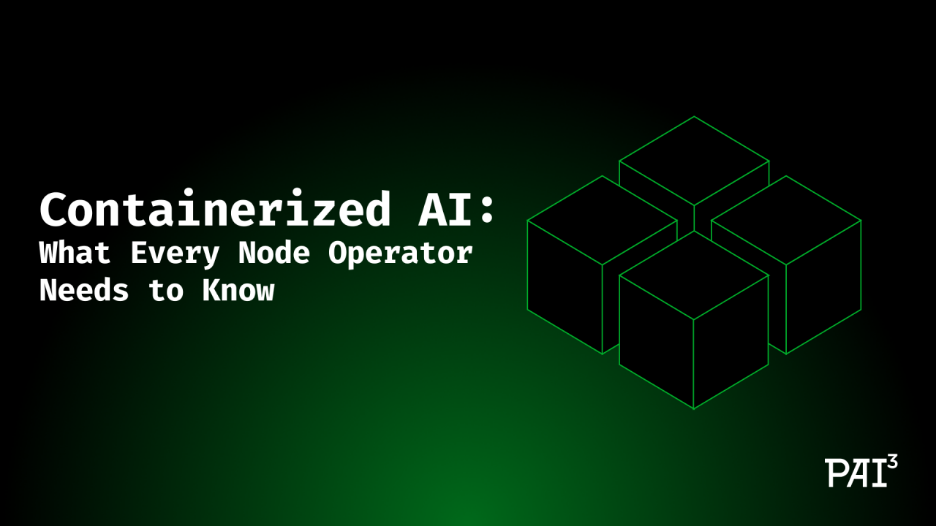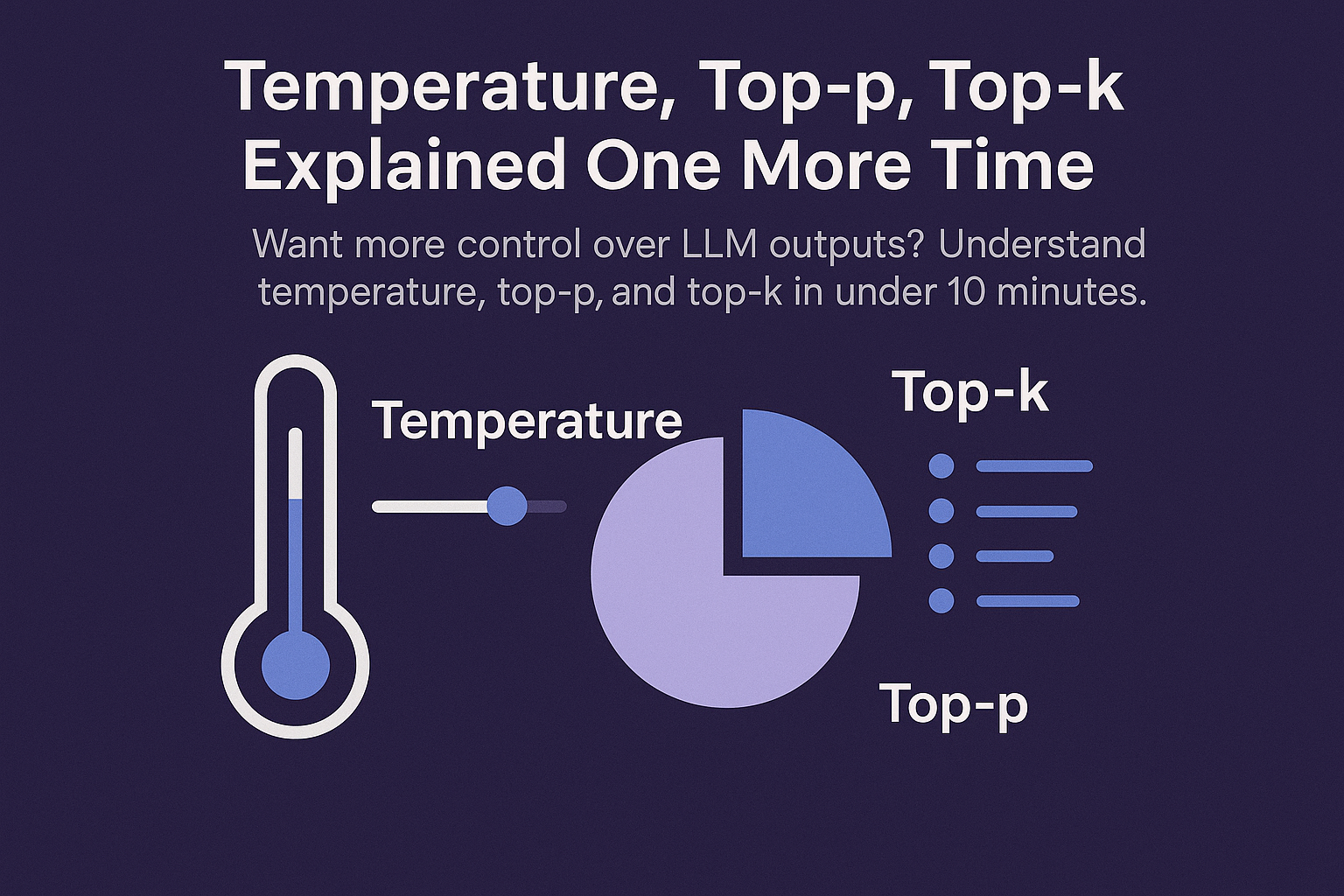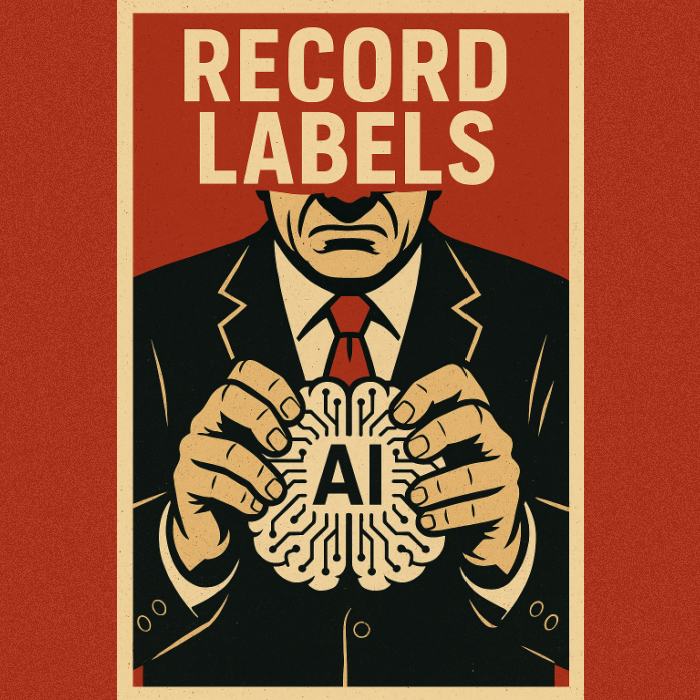
Containerized AI: What Every Node Operator Needs to Know
In the rapidly evolving landscape of artificial intelligence, containerization has emerged as a crucial methodology for deploying AI models efficiently. For node operators, understanding the interplay between containers and AI systems can unlock substantial benefits in scalability and resource management. In this guide, we'll delve into what every node operator needs to be aware of when integrating containerized AI into their operations, from foundational concepts to practical considerations.
Dev Orbit
July 27, 2025
Introduction
The increasing demand for AI applications has created a pressing need for scalable and efficient deployment solutions. Traditional systems often fall short, leading to performance bottlenecks and resource inefficiencies. This is where developments like GPT-5 come into play, offering enhanced capabilities that can be better utilized when deployed in containerized environments. This article will not only explore these capabilities but also provide essential insights that allow node operators to optimize their AI workloads using containers flexibly and effectively.
Understanding Containerization in the Context of AI
Containerization is a lightweight form of virtualization that enables developers to package an application and its dependencies into a single unit, known as a container. This unit can run seamlessly in any computing environment that supports containers, irrespective of underlying hardware or software configurations. For node operators, containerization presents several key advantages:
Isolation: Each container runs in its own environment, ensuring that dependencies do not conflict with one another. This isolation is particularly crucial for testing AI algorithms that might depend on specific library versions.
Scalability: Containers can be easily spun up or down, allowing for efficient scaling of AI applications based on real-time demands. This is especially beneficial in environments with fluctuating workloads.
Dependency Management: Packaging dependencies with the application simplifies the management of various versions and configurations. It eliminates the “it works on my machine” problem commonly encountered in software development.
Rapid Deployment: Containers can be deployed quickly and consistently across diverse environments, leading to faster time-to-market for AI applications.
By utilizing containerization, node operators can enhance the performance of their AI models significantly while improving management efficiency and reliability.
Implementing Containerization for AI Workloads
So how can node operators effectively implement containerization for their AI workloads? Below are some essential steps and considerations:
1. Choosing the Right Container Technology
While Docker is the most recognized containerization technology, there are various alternatives appealing for distinct use cases. For instance, Kubernetes enables orchestration of container deployments, making it easier to manage large-scale systems where workloads must be dynamically allocated based on resource availability.
When selecting a container technology, consider:
Compatibility: Ensure that the container platform integrates well with your existing tools and workflows.
Community Support: A strong community can offer valuable resources and assist with troubleshooting.
Performance: Evaluate the performance implications of the chosen container technology on your AI models.
2. Designing Efficient Container Images
Creating efficient container images is critical to ensuring that AI applications run smoothly. Some best practices include:
Minimize Image Size: Keeping your container images lean reduces the time needed for deployment and the resources consumed during execution.
Use Multi-Stage Builds: This allows for separating the build environment from the runtime environment, further optimizing sizes and improving security.
Leverage Caching: Utilize Docker's layer caching to speed up the build process by reusing unchanged layers.
3. Managing Resources with Container Orchestration
As AI models grow in complexity, managing the resources allocated to each container becomes increasingly important. Container orchestration tools such as Kubernetes facilitate this process, providing built-in functionalities for load balancing, auto-scaling, and health monitoring.
Implementing resource management strategies can help ensure your AI applications run optimally:
Resource Requests and Limits: By setting resource requests and limits, you can allocate the necessary CPU and memory for each container while preventing any one application from over-consuming resources.
Horizontal Pod Autoscaling: Automatically scale the number of pods (the smallest deployable units in Kubernetes) based on CPU utilization or other select metrics.
Monitoring and Alerts: Utilize tools such as Prometheus or Grafana to monitor resource usage continuously and set up alerts for critical thresholds.
Addressing Common Challenges in AI Containerization
While there are numerous advantages to containerizing AI applications, node operators encounter several challenges during implementation. Here’s how to proactively address them:
1. Performance Overheads
Containerization can introduce performance overheads due to the additional abstraction layer. To mitigate this issue:
Profile and Benchmark: Continuously benchmark AI workloads running in containers against traditional deployment models to identify bottlenecks.
Optimize Storage Solutions: Choose the right storage technologies that align with your performance requirements, such as utilizing SSDs for high-speed access.
2. Security Considerations
Containers can introduce specific security vulnerabilities if not properly managed. Follow these best practices to enhance security:
Image Scanning: Use tools to scan images for known vulnerabilities before deploying them.
Least Privilege Principle: Run containers with the minimum privileges necessary to limit potential exploit vectors.
3. Complex Networking Configurations
Networking in containerized environments can be intricate. Leverage modern networking solutions that provide:
Service Discovery: Tools such as Consul can help manage service discovery and networking issues.
Networking Policies: Implement control policies to manage traffic between various containers.
Bonus/Advanced Tips for Optimizing Containerized AI
For node operators looking to finesse their containerized AI deployments, consider the following advanced tips:
1. Use of GPU Resources
AI workloads can be resource-intensive, particularly regarding computation. Using GPU resources effectively within containers can yield significant performance benefits. Technologies such as NVIDIA Docker allow the seamless integration of GPU capabilities.
2. Continuous Integration/Continuous Deployment (CI/CD)
Adopt CI/CD practices for your containerized AI applications to streamline the development process. This encourages rapid iteration cycles and improves deployment efficiency.
3. Automate Scaling Decisions
AI systems can introduce unpredictability in workloads. Consider using machine learning algorithms to automate scaling decisions based on usage patterns, potentially further optimizing performance.
4. Explore Serverless Architectures
Investigation into serverless container solutions like AWS Fargate can provide a reduced operational overhead. By leveraging these services, you can focus more on development rather than infrastructure management.
Conclusion
Containerization represents a revolutionary approach to deploying and managing AI applications, allowing node operators to enhance the scalability, efficiency, and management of their systems. From selecting the right technology to implementing best practices for resource management and security, understanding these fundamentals is essential for success. Don’t hesitate to share your experiences, insights, or any questions you may have regarding containerized AI in the comments below. Your input can foster valuable discussions around this dynamic technology!

Enjoyed this article?
Subscribe to our newsletter and never miss out on new articles and updates.
More from Dev Orbit

9 Real-World Python Fixes That Instantly Made My Scripts Production-Ready
In this article, we explore essential Python fixes and improvements that enhance script stability and performance, making them fit for production use. Learn how these practical insights can help streamline your workflows and deliver reliable applications.

10 JavaScript Quirks That Look Wrong (But Are Actually Right)
This article dives deep into ten surprising quirks of JavaScript that might confuse developers, especially those new to the language. From unexpected behavior with type coercion to peculiarities in operator precedence, we will clarify each aspect with real-world examples and practical implications. By understanding these quirks, developers can write cleaner and more efficient code, avoiding common pitfalls along the way.

AI: A Double-Edged Sword for HumanityAI: A Double-Edged Sword for Humanity
As we navigate the uncharted waters of artificial intelligence, we face a remarkable revolution that holds the potential to dramatically reshape human existence. This article delves into how AI can serve both as an unparalleled tool for advancement and a potential source of significant challenges. We will explore the implications of AI, particularly the upcoming advancements like GPT-5, offering valuable insights into harnessing its power responsibly.

How my Mindfulness App Triggered a Hidden Anxiety Cycle
Have you ever thought a mindfulness app was the key to tranquility, only to find it triggered unexpected feelings of anxiety? This article unfolds my journey of using a mindfulness app, its surprising consequences on my mental health, and what I learned along the way. Tune in if you're keen to explore the intricacies of anxiety cycles and how mindfulness might sometimes amplify rather than alleviate them.

How to Write an Essay Using PerfectEssayWriter.ai
Have you ever stared at a blank page, overwhelmed by the thought of writing an essay? You're not alone. Many students and professionals feel the anxiety that accompanies essay writing. However, with the advancements in AI technology, tools like PerfectEssayWriter.ai can transform your writing experience. This article delves into how you can leverage this tool to produce high-quality essays efficiently, streamline your writing process, and boost your confidence. Whether you're a student, a professional, or simply someone looking to improve your writing skills, this guide has you covered.

How to Build an App Like SpicyChat AI: A Complete Video Chat Platform Guide
Are you intrigued by the concept of creating your own video chat platform like SpicyChat AI? In this comprehensive guide, we will walk you through the essentials of building a robust app that not only facilitates seamless video communication but also leverages cutting-edge technology such as artificial intelligence. By the end of this post, you'll have a clear roadmap to make your video chat application a reality, incorporating intriguing features that enhance user experience.
Releted Blogs

A Beginner’s Guide to AWS EC2 and AWS Lambda: When and Why to Use Them
Confused between EC2 and Lambda? This beginner-friendly guide breaks down their core differences, use cases, pros and cons and helps you choose the right service for your application needs.

From Autocompletion to Agentic Reasoning: The Evolution of AI Code Assistants
Discover how AI code assistants have progressed from simple autocompletion tools to highly sophisticated systems capable of agentic reasoning. This article explores the innovations driving this transformation and what it means for developers and technical teams alike.

Temperature, Top-P, Top-K — Explained One More Time
This comprehensive guide delves into the intricacies of temperature, top-p, and top-k parameters in AI language models. Whether you're a developer or researcher, you'll learn how to leverage these settings to improve your model's performance and get the most out of AI-generated content.

📌Self-Hosting Secrets: How Devs Are Cutting Costs and Gaining Control
Self-hosting is no longer just for the tech-savvy elite. In this deep-dive 2025 tutorial, we break down how and why to take back control of your infrastructure—from cost, to security, to long-term scalability.

The Labels First Sued AI. Now They Want to Own It.
In the rapidly evolving landscape of artificial intelligence, a fascinating shift is underway. Music labels, once adversaries of AI applications in the music industry, are now vying for ownership and control over the very technologies they once fought against. This article delves into the complexity of this pivot, examining the implications of labels seeking to own AI and how this transition could redefine the music landscape. If you’re keen on understanding the future of music technology and the battle for ownership in an AI-driven age, read on.

Raed Abedalaziz Ramadan: Steering Saudi Investment Toward the Future with AI and Digital Currencies
In an era marked by rapid technological advancements, the intersection of artificial intelligence and digital currencies is reshaping global investment landscapes. Industry leaders like Raed Abedalaziz Ramadan are pioneering efforts to integrate these innovations within Saudi Arabia’s economic framework. This article delves into how AI and digital currencies are being leveraged to position Saudi investments for future success, providing insights, strategies and practical implications for stakeholders.
Have a story to tell?
Join our community of writers and share your insights with the world.
Start Writing